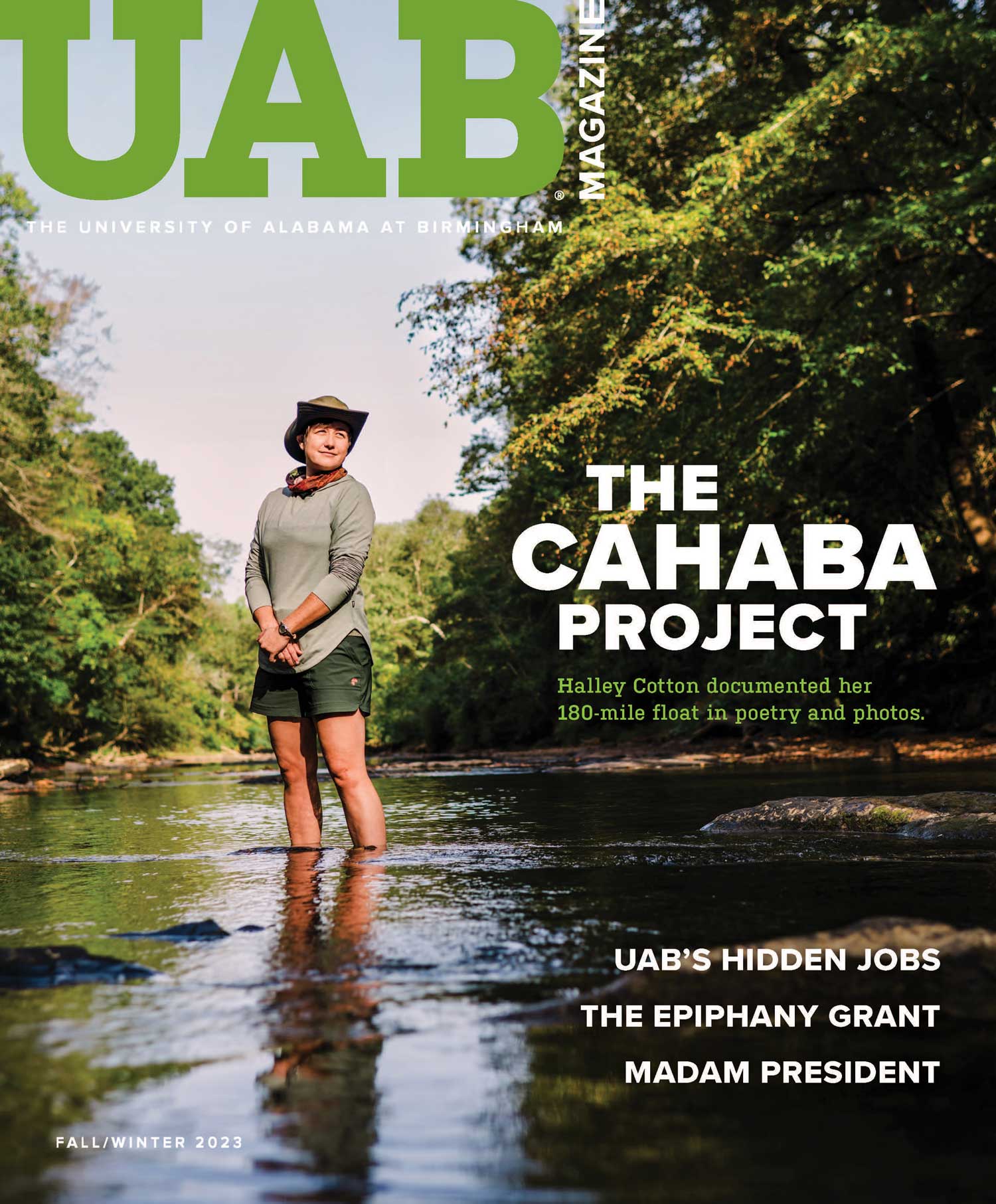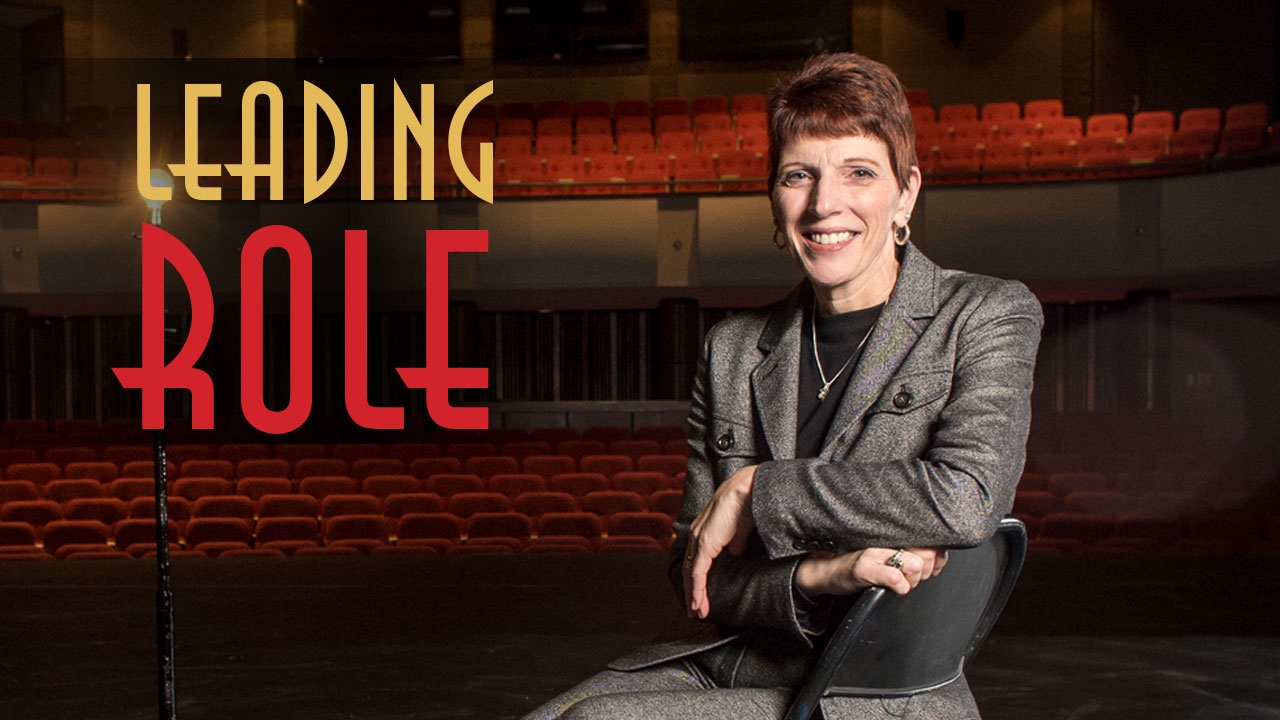With the wave of a baton on a fall night in 1996, Leonard Slatkin and the National Symphony Orchestra gave UAB’s Alys Stephens Performing Arts Center (ASC) its first moment in the spotlight. Now, after 20 years of legendary performances from stars and rising talents in music, dance, theatre, and more, the ASC is showing off fresh improvements and enhancements to the Jemison Concert Hall and a new digital sound system—along with an exciting anniversary season.
The center also has a new executive director, Anna M. Thompson (pictured above, on stage at the Jemison Concert Hall), who came to UAB in 2015 from the University of Notre Dame’s performing arts center. The Michigan native’s 30-year career includes arts administration roles at colleges and museums in Minnesota and Indiana; she also is classically trained in the French horn. Here, Thompson describes the ASC’s role in the local arts scene, offers a peek at future seasons, and describes the importance of the arts, including education and outreach, to Birmingham’s revitalization:
How are you enjoying Birmingham?
Thompson: My husband and I have fallen in love with the city. We’re busy every weekend, which is exciting. The food’s extraordinary, too!
The nice thing about Birmingham’s vibrant art scene is that you can get to everything. It’s affordable, you don’t have Atlanta’s traffic, and you have the quality and variety of larger cities. We have an amazing orchestra, for example. The opera, music clubs, and Alabama Dance Council are doing great work. And to have the Birmingham Museum of Art, the Abroms-Engel Institute for the Visual Arts, and the Civil Rights Institute here is fantastic.
The ASC is one of the stars in the firmament. It takes all of these hard-working organizations to make a beautiful night sky. They speak to the value placed on the arts here. They demonstrate that Birmingham is an intellectual city that cares about its citizens and wants to attract and keep businesses and employees.
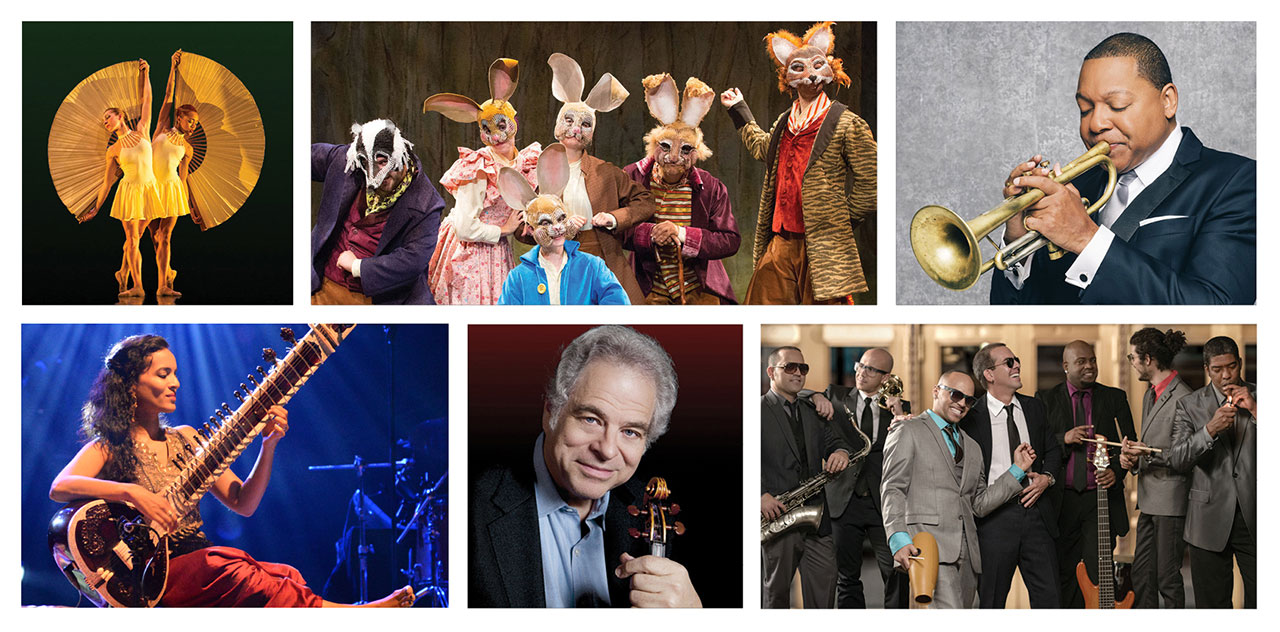 Highlights from the ASC's current season include (clockwise from top left) dancer-illusionists MOMIX, Enchantment Theatre Company's Peter RabbitTM Tales, Jazz at Lincoln Center Orchestra with Wynton Marsalis, Tiempo Libre, Itzhak Perlman, and Anoushka Shankar.
Highlights from the ASC's current season include (clockwise from top left) dancer-illusionists MOMIX, Enchantment Theatre Company's Peter RabbitTM Tales, Jazz at Lincoln Center Orchestra with Wynton Marsalis, Tiempo Libre, Itzhak Perlman, and Anoushka Shankar.
How does the ASC’s role differ from other local arts organizations?
Thompson: We serve as a bridge between the campus and the community; we face both ways. So we create programming that engages students and faculty and ties in to the classroom. At the same time, we are a point of entry to the arts for everyone in the community.
How do you target students and faculty?
Thompson: We want our students to see thought-provoking things that they won’t see anywhere else. For example, BASETRACK Live was a recent theatrical presentation that dealt with stories of Afghanistan war veterans. We collaborated with the Birmingham Veterans Affairs Medical Center to have a panel discussion with that event so that students could learn about the effects of war.
We also had illusionist Kevin Spencer here for a week recently. He has a psychology background and uses magic to help folks going through occupational and physical therapy, psychiatric patients, and children on the autism spectrum. He led teaching workshops for our OT and PT students, showing them how magic can assist patients to improve dexterity and manipulation of objects. He also worked with kids on the autism spectrum, and then he did the most amazing sensory-friendly performance where he brought children on stage. They felt completely comfortable, safe, and secure with Kevin.
You have commissioned many dance performances in your career and served on the board of Dance/USA. Will we see more dance at the ASC, and what else can we expect in future seasons?
Thompson: We strengthened our dance program this season, and you’ll see more next year. It’s a priority because modern and contemporary dance are beautiful visual mediums that require no translation—or any understanding of the art form. They allow everybody to enter a different environment and take in the wonder of it all.
We also want to cultivate a new generation of arts patrons through our Family Series performances, which are affordable and last about an hour, and with our free events. This past fall, we brought together local arts organizations to celebrate Hispanic Heritage Month. So Carlos Izcaray, music director for the Alabama Symphony Orchestra, lectured at the Alabama School of Fine Arts. We brought Latin-dance musicians Tiempo Libre for an ASC performance, and they also headlined a free outdoor party with salsa lessons and food trucks. We’ll do the same thing in the spring with IndiaFest. These collaborations create citywide festivals that raise Birmingham’s profile as an arts destination.
We also have a new Salon Series that puts the audience on stage with the musicians. It’s intimate, the way chamber music was meant to be.
Do you plan to commission new works?
Thompson: We can create a national and international artistic legacy by becoming a research institution, which in our field means commissioning new works. Following their world premiere here, these works can tour the world bearing UAB’s name.
For 2017-2018, we have commissioned Glenn Kotche, the drummer from the band Wilco, to write a piece for Third Coast Percussion and UAB percussion students. Glenn and Third Coast, an amazing ensemble, will do a weeklong residency with our music students and local schools. We also will host the Alabama Day of Percussion, with high school and college students coming here for clinics. Glenn will lead one of those, and then he and Third Coast will perform the world premiere of the commissioned piece.
What is your dream project?
Thompson: I would love to commission an entire season of new dance works with live music. Originally, dance always was done with live music; that has become cost prohibitive, so now the music usually is taped. That’s unfortunate, because there is a spontaneous give and take between dancers and musicians that can make a performance amazing. I would love to have 1,100 people see a dance performance with live music for multiple nights.
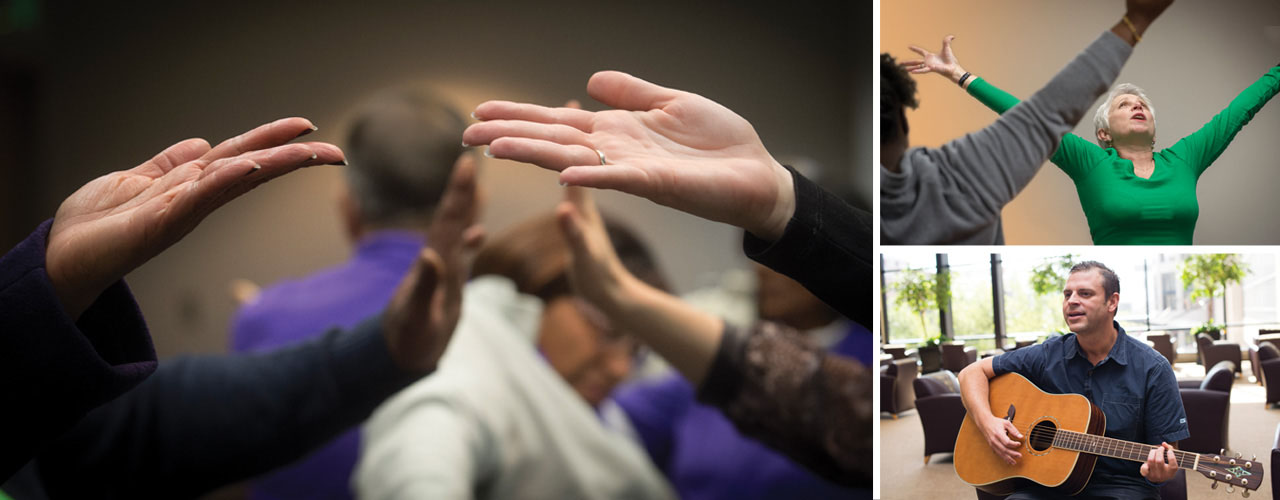 The ASC's Arts in Medicine program provides a creative approach to healing. Artists-in-residence help patients, families, and caregivers lift their minds, bodies, and spirits through movement classes and music (pictured here), along with visual art-making sessions, sewing, and storytelling.
The ASC's Arts in Medicine program provides a creative approach to healing. Artists-in-residence help patients, families, and caregivers lift their minds, bodies, and spirits through movement classes and music (pictured here), along with visual art-making sessions, sewing, and storytelling.
How do the ASC’s education and outreach programs cultivate the arts throughout the Birmingham area?
Thompson: The ASC’s community work brought me here. My background is in music education; early in my career, I was a middle- and high-school band director. So when I learned about UAB’s ArtPlay and Arts in Medicine, I wanted to be part of them.
Our programs—Arts in Medicine, Aging Creatively, ArtPlay, Words Are Our World, Meet the Artist, and musical theatre camps—bring artists and the arts into schools, hospitals, senior centers, and Birmingham-area neighborhoods. Last year we served 19,000 through our outreach initiatives in Shelby, Blount, and Jefferson counties, plus another 16,000 through Arts in Medicine. These programs, offered free or at a low cost, don’t merely expose community members to the arts; they provide experiential learning in the arts. We encourage everyone to find their own creative outlet, whether it’s painting, poetry, dance, or something else.
These encounters with the arts make a lasting impact. For example, Words Are Our World pairs the ASC with McWane Science Center to improve vocabulary skills among preschool children in the Norwood and Woodlawn neighborhoods. The ASC team created the friendly taxicab Vocabby to engage children, who receive books and a vocabulary practice kit to take home. If parents and kids read together—even just 10 minutes a day—that can help them get ahead when they start school. We expect to expand this program throughout the city in the future.
How else is the ASC playing a role in Birmingham’s revitalization?
Thompson: We draw from a broad area for our events, and these visitors help stimulate the economy by buying tickets and going to dinner and after-show events. We also employ artists through our programs. But just as important, we are engaging people through our education and outreach—encouraging them to participate in the arts. Hopefully they will be inspired to see shows at the ASC or other area arts organizations. We are building a creative community.
The support of our donors and sponsors makes all this possible. We also encourage continuous support and involvement from the whole community, whether that involves buying tickets, attending free events, making a donation, becoming a member, giving your time and talents—even telling a friend about an ASC performance you saw. We also want constructive criticism. We can’t get better at what we do if we don’t hear that. The ASC has been here for Birmingham for 20 years, and we want the community to join us as we grow.
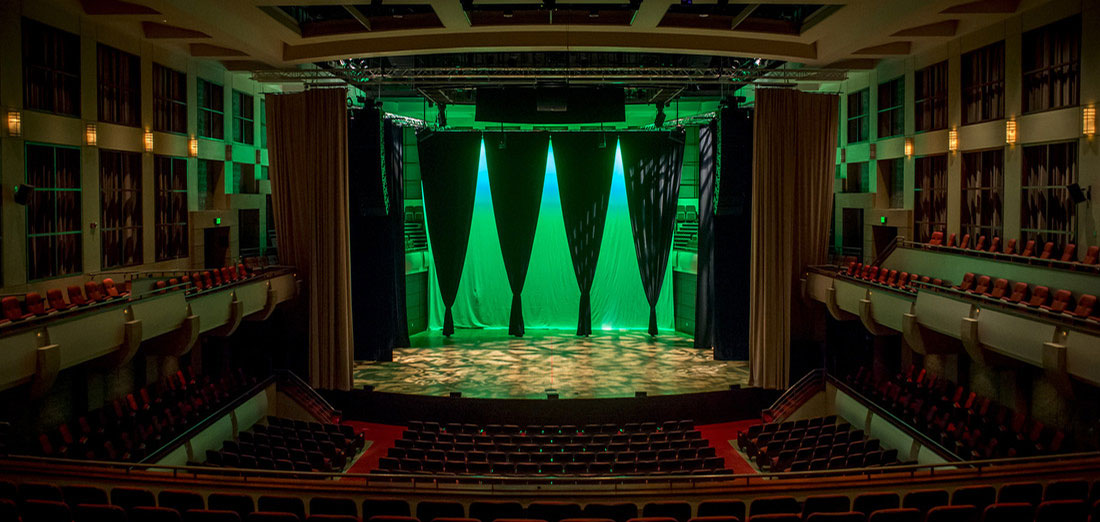
Published March 2017
 Highlights from the ASC's current season include (clockwise from top left) dancer-illusionists MOMIX, Enchantment Theatre Company's Peter RabbitTM Tales, Jazz at Lincoln Center Orchestra with Wynton Marsalis, Tiempo Libre, Itzhak Perlman, and Anoushka Shankar.
Highlights from the ASC's current season include (clockwise from top left) dancer-illusionists MOMIX, Enchantment Theatre Company's Peter RabbitTM Tales, Jazz at Lincoln Center Orchestra with Wynton Marsalis, Tiempo Libre, Itzhak Perlman, and Anoushka Shankar. The ASC's Arts in Medicine program provides a creative approach to healing. Artists-in-residence help patients, families, and caregivers lift their minds, bodies, and spirits through movement classes and music (pictured here), along with visual art-making sessions, sewing, and storytelling.
The ASC's Arts in Medicine program provides a creative approach to healing. Artists-in-residence help patients, families, and caregivers lift their minds, bodies, and spirits through movement classes and music (pictured here), along with visual art-making sessions, sewing, and storytelling.

